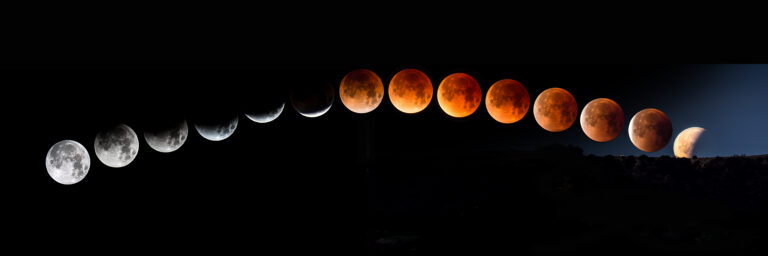
The night sky on March 13-14, 2025, will showcase a spectacular total lunar eclipse, often referred to as a “Blood Moon.” This celestial event occurs when the Earth aligns directly between the Sun and the Moon, casting Earth’s shadow over the lunar surface and giving it a reddish hue. This phenomenon is safe to observe without any special equipment.
Eclipse Timing and Phases
The total lunar eclipse will unfold over several hours, with key phases as follows:
- Penumbral Eclipse Begins: 11:57 p.m. EDT on March 13
- Partial Eclipse Starts: 1:09 a.m. EDT on March 14
- Total Eclipse (Blood Moon) Occurs: 2:26 a.m. to 3:31 a.m. EDT
- Partial Eclipse Ends: 4:48 a.m. EDT
- Penumbral Eclipse Concludes: 6:00 a.m. EDT
During totality, from 2:26 a.m. to 3:31 a.m. EDT, the Moon will appear with a reddish tint due to Earth’s atmosphere filtering out shorter-wavelength blue light.
Best Viewing Locations Across the United States
The eclipse will be visible across the entire continental U.S. and most of Alaska and Hawaii. However, weather conditions will play a crucial role in visibility.
- Lower Great Lakes and Ohio Valley: These regions, including states like Ohio, Indiana, and Michigan, are expected to have clear skies, offering optimal viewing conditions.
- Central Plains and Texas: Areas stretching from Kansas and Oklahoma down into Texas should also experience favorable weather, making them excellent spots to observe the eclipse.
- California: Specific locations such as the Chabot Space & Science Center in Oakland, the Lawrence Hall of Science in Berkeley, and the Exploratorium in San Francisco are organizing viewing events. Additionally, Joshua Tree National Park and Death Valley National Park, known for their dark skies, are ideal for eclipse observation.
Areas with Potential Viewing Challenges
Certain regions may experience cloud cover or unfavorable weather conditions during the eclipse:
- Pacific Northwest: States like Washington and Oregon, as well as northern and central California, may face marine layer clouds, obstructing the view.
- Rocky Mountain Region: A storm system could bring clouds and precipitation to areas including Montana, Wyoming, and parts of Colorado, potentially hindering visibility.
- Gulf Coast: Coastal regions of Louisiana, Mississippi, Alabama, and the Florida Panhandle might experience low clouds, making eclipse observation difficult.
- Northeastern U.S.: Major cities along the I-95 corridor, such as Philadelphia, New York, and Boston, could see low cloudiness due to an offshore weather disturbance. However, traveling a short distance inland may lead to clearer skies.
Viewing Tips for the Eclipse
To enhance your eclipse-watching experience:
- Choose a Dark Location: Find an area away from city lights to reduce light pollution.
- Check Local Weather: Monitor weather forecasts leading up to the event to ensure clear skies.
- Use Binoculars or Telescopes: While the eclipse is visible to the naked eye, optical aids can provide a more detailed view.
- Arrive Early: Give yourself ample time to set up and allow your eyes to adjust to the darkness.
This total lunar eclipse offers a unique opportunity to witness a celestial event that won’t occur again until September 2025 and won’t be visible from most of the U.S.
Gather your friends and family, find a comfortable spot, and enjoy the mesmerizing sight of the Moon transforming into a Blood Moon.
The Best Way to View an Eclipse: An RV Rental!
For a comfortable and convenient way to visit a remote destination and soak in the beauty of an eclipse, consider renting an RV. You’ll be able to travel off the beaten path while still having all the comforts of home, like a bathroom, bed, and kitchen, along with you. Load up the RV with snacks, pack your telescope and wrap yourself in comfy blankets while heading to the perfect spot to view this special display from nature.






